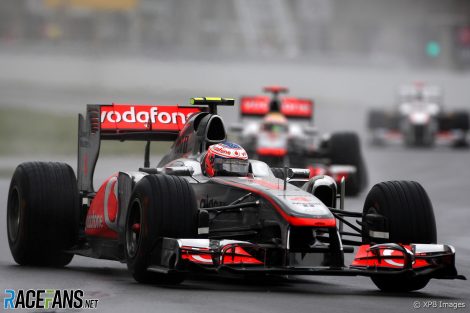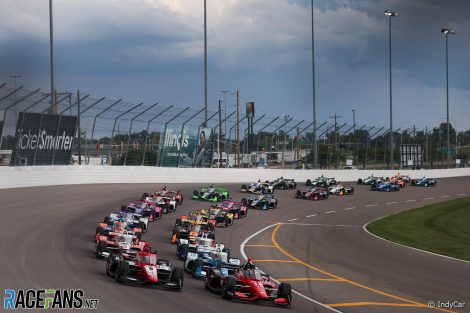The 15th round of the IndyCar season went the distance at Gateway last weekend thanks to the organisers’ preparation and perseverance.
It’s hard to imagine some other series, notably Formula 1, would have coped as well with the challenges posted by the weather at the two-kilometre oval in Illinois.
Like F1, IndyCar does race in the rain on road and street courses. But ovals are a different matter – the risks posed by a sudden loss of adhesion are simply too great, and the merest hint of moisture brings proceedings to a swift stop.
So, when the weather radar gave ominous readings ahead of Saturday’s IndyCar race, the organisers first reacted by bringing the start time forwards by half an hour. This was the earliest they could arrange within the window allocated for television broadcasts, and is something F1 hasn’t previously done when its races were threatened by severe weather.
At first the organisers had some good fortune – a succession of showers brushed past the vicinity of the speedway without disrupting proceedings. But by 217 of the planned 260 laps the dreaded drops had hit, and the red flags flew.
At this stage more than 80% of the race distance has been covered, more than enough for an official result to be declared. Nonetheless, IndyCar persevered with its efforts to ensure the race ran its course.
So, two hours and 19 minutes after the race was stopped, the cars roared off again. As it turned out there was only a quarter of an hour of the race left to run. But spectators were treated to a thrilling conclusion, Josef Newgarden passing his team mate Scott McLaughlin to win while the pair were hunted down by flying rookie David Malukas, who split them before the chequered flag fell. It came four hours and 40 minutes after proceedings began.
This would not happen in F1. Indeed, this could not happen in F1: The rules don’t allow it.
Advert | Become a RaceFans supporter and
Since 2012, once an F1 race starts the chequered flag must fall before a certain amount of time has elapsed. The limit was originally set at four hours.

This was prompted by the 2011 Canadian Grand Prix, which was badly disrupted by heavy rain. It always seemed perverse that such a celebrated race (currently number four in the RaceFans’ readers Top 100 races), which was decided by a last-lap pass in its 244th minute, prompted the introduction of…
Click Here to Read the Full Original Article at RaceFans…

